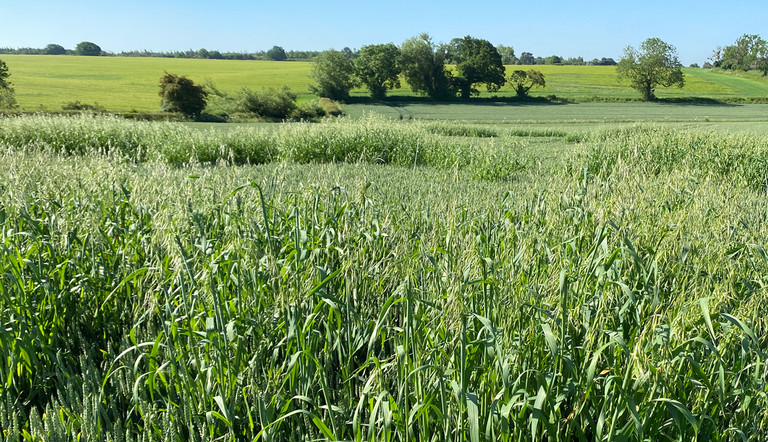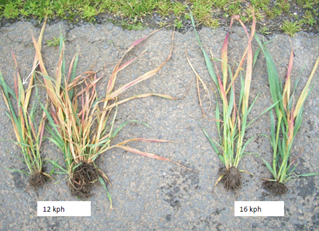
Taming wild oats with TOPIK

In addition to the array of cultural controls needed to reduce wild oat infestations (more information here), an appropriate herbicide should be used to spray off the worst affected areas as early as possible (and prior to GS41) and when conditions are conducive to good herbicide performance.
TOPIK (240 g/L clodinafop-propargyl and 60 g/L cloquintocet-mexyl) provides good control of wild oats in cereals and can also be used to control rough meadow-grass. It also provides moderate control of susceptible Italian rye-grass.
Apply with care
To achieve the best levels of efficacy, TOPIK must be used with care to ensure the required level of spray coverage is achieved – especially when targeting weeds which are shielded by a well-developed crop canopy.
Busy spraying schedules can make it tempting use a reduced water volume (so that more ground can be covered within a specific window of opportunity) but this can be counter-intuitive when tackling wild oats: if TOPIK is being applied early in the spring (e.g. when weeds are small and not shielded by the crop canopy) it is possible to use a reduced water volume (100 L/ha instead of 200 L/ha). However, for applications made beyond GS31 (when the crop canopy will offer greater protection to weeds below) a water volume of at least 200 L/ha is recommended for most scenarios.*
Irrespective of when it is used, TOPIK will perform best when applied during good growing conditions as this improves uptake: cold and dry conditions impede the efficacy of all ACCase herbicides even when applied at the optimum timing for wild-oat activity.
Spraying tips
Nozzle choice, boom height and forward operating speed will also have an impact on spray coverage, as will nozzle choice and angle. The simple advice when spraying for wild oats is to:
- Spray slowly (12pkh)
- Spray at a sensible boom height (50cm above the canopy)
- Use an appropriate water volume (200l/ha)
- Select a nozzle type and angle to target weeds beneath the crop canopy.

Reducing sprayer forward speed from 16kph down to 12kph is just one of the considerations needed to maximise wild oat control. Water volume, boom height and nozzle choice are also key factors, especially when tackling weeds protected by a thick crop canopy.
(Photo credit: Syngenta forward speed trial on TOPIK)
TOPIK: application recommendations
Early spring applications (before GS31)
Prior to GS31: small weeds sitting in an open crop canopy will be easier to target
Water volume: 100 L/ha
Maximum speed: 12 kph
Nozzle: angled 3D nozzle for all-round coverage
Boom height: 50cm above canopy
Late spring applications
GS31-41: small weeds protected by a taller and thicker crop canopy
Water volume: 200 L/ha*
Maximum speed: 12 kph
Nozzle: angled 3D nozzle for all-round coverage
Boom height: 50cm above canopy
*There is some evidence to suggest that smaller droplets and a concentrated solution using 100 L/ha will perform well at the GS31-41 timing, but only if the wild oat plants are larger than the crop and therefore emerging above the crop canopy.
TOPIK 240 g/L clodinafop-propargyl and 60 g/L cloquintocet-mexyl
Controls wild-oats, rough meadow-grass and gives moderate control of Italian rye-grass in wheat, durum wheat and triticale.
![Focal Point Preview: Cards Four Desktop[308x240]](https://www.adama.com/uk/sites/adama_uk/files/styles/cards_four_desktop/public/2023-01/TOPIK%20Packshot.png?h=aa90bd99&itok=vy4cVjd9&focal_point_preview_value=50x50)
Optimum timing:
Wild-oats from 1 leaf unfolded up to flag leaf ligule visible.
Application rates:
0.25 L/ha
0.125 L/ha plus adjuvant (methylated seed oil)
Optimum weed control is best achieved when all the wild-oats have emerged and are actively growing in good conditions. More information here.